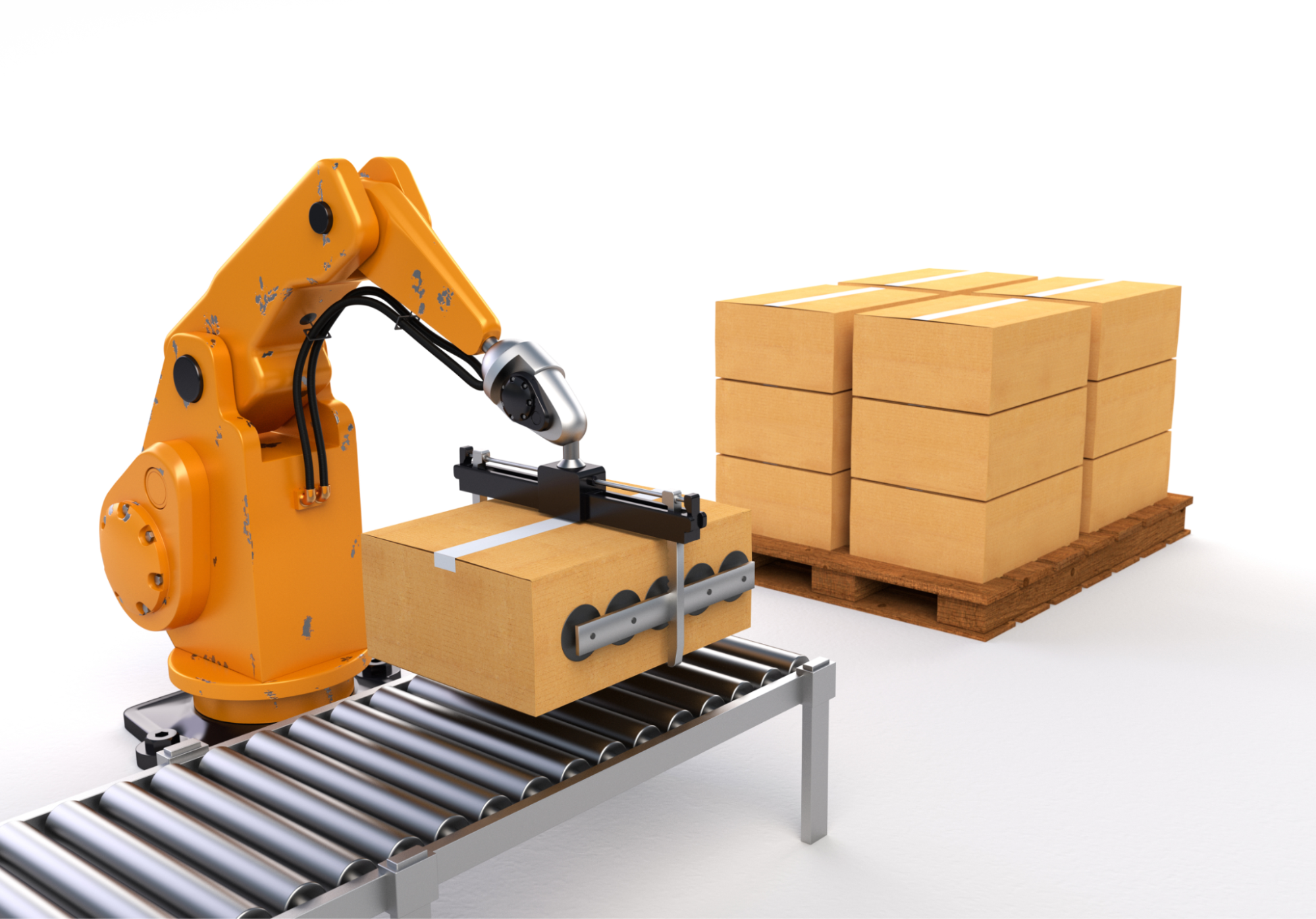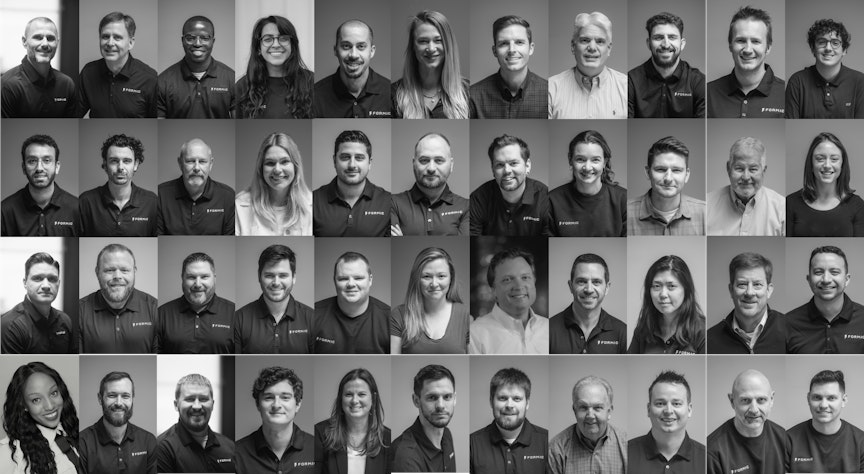A Guide to Getting Started with Palletizing Automation
From small businesses to large manufacturing plants, automated palletizing has revolutionized how we handle products. In this guide, we delve into everything you need to know about this game-changing technology.
The Importance of Palletizing in Manufacturing and Co-Packing Facilities
Palletizing is a fundamental operation in manufacturing and co-packing facilities. It involves stacking goods onto a pallet for easy transport or storage. Traditionally, this process was manual, requiring significant labor and time. However, advancements in technology have led to the rise of automated palletizing, which has significantly enhanced efficiency and productivity in these two industries.

Source: MidJourney
How Should You Automate Palletizing? A Step-by-Step Guide
Demystifying the process of automated palletizing, let's break it down into practical, real-world steps:
Production Line Assessment
Before any automated palletizing process begins, a thorough evaluation of the production line is crucial. This assessment helps in understanding the workflow and identifying the areas where automation can bring about the most significant benefits and ROI for your operation. Some initial considerations during your production line assessment could be:
Product Assessment
The next step involves analyzing the products to be palletized. Key parameters include the size and weight of the bags or boxes, the products inside of the containers, and product requirements specific to your operation. This information helps in selecting the right palletizing system suitable for handling these products effectively.
Production Rate
It's important to evaluate the rate at which the products are produced. For palletizing applications, this is often measured in Cases per Minute (CPM) or Cases per Hour (CPH). This helps in determining the speed requirements for the automated palletizing system.
Case & Pallet Labeling Requirements
After assessing the production line and analyzing the products to be palletized, the next crucial step is to identify specific labeling standards, including legal and customer requirements. If your operation has existing labeling equipment, it’s important to account for them in the design of the palletizing solution. If you’re deploying a labeling solution as part of the palletizing system, it’s critical to define all of the labeling requirements so that the turnkey solution runs smoothly in your production operation.
It’s important to identify whether your application will require barcode or label validation, which can be achieved through either sensors, barcode scanners/reader, and/or vision systems.
Get Your Free Getting Started Guide Here

Source: How To Robot
Pallet Securement
Pallet securement plays a critical role in ensuring your products make it to your customers with the highest level of quality possible. This includes both implementing automated machines for pallet wrapping or strapping, and also selecting the right shrink wrapping, strapping, and/or corner board materials.
Ownership vs Robots-as-a-Service with Formic
Ownership of Automated Palletizing System
Under this model, businesses can purchase the automated palletizing system outright. This approach requires both significant upfront capital investment as well as ongoing overhead for the day to day management, ownership, and maintenance of the system. The advantage of ownership has primarily been full control over the system. With Formic’s Robotics as a Service model, we ensure that you maintain complete control of your production, while outsourcing the management and maintenance of the system to us. You can invest or maintain your capital for other purposes.
Key Points:
Upfront Costs: Requires a significant initial investment.
Maintenance: Ongoing costs and responsibilities for support,maintenance, and upgrades.
Robots-as-a-Service (RaaS)
The RaaS model with Formic offers a more flexible approach to procuring an automated palletizing system. This option eliminates the need for an upfront investment, allowing more resources to be preserved used for growth. Lifetime support and maintenance are included, making it an attractive option for many businesses.
Key Points:
Zero Upfront Costs: No initial investment required.
Scalability: Easily scalable, modifiable, upgradeable, and even replaceable to meet changing business needs.
Lifetime Support and Maintenance: Ongoing support provided by Formic.
Last Step: Implementation
If you work directly with an equipment supplier or manufacturer, you’re on your own here. That means, unloading, setup, training, and ongoing maintenance. If you work with Formic, all you have to do now is sit back and relax. Unlike any other robotics company, the team will ship the system, unload at your facility and make sure everything is in its place before powering on. Some calibrations may be needed before running your product at production rates, so their trained system technicians will dial in all parameters. Once the system is operating at maximum efficiency, Formic sticks around. Post production support and training for all relevant team members interacting with the system is incredibly important and ensures that your adoption of the new automation into your existing process is seamless.
Get Your Free Getting Started Guide Here
Advantages of Automated Palletizing
There are several reasons why many operations are turning to automated palletizing. For one, it significantly reduces the time taken to palletize goods. Robots are faster and more precise than humans, which leads to increased productivity and often increased throughputs and capabilities like taller pallets, heavier packs, etc. Moreover, automated palletizing brings consistency to the process. Regardless of the time of day or the number of hours worked, the quality of work remains the same.
Automated palletizing also addresses labor challenges. It eliminates the need for heavy lifting, reducing the risk of injuries in the workplace. Plus, it allows workers to focus on more complex tasks, leading to better utilization of human resources.
Collaborative Robots (Cobots)
One of the most exciting - and misunderstood - developments in automated palletizing is the use of collaborative robots, or cobots. ‘Cobots’ are designed to work alongside humans on tasks that are best shared.. Cobots are highly flexible and can be programmed to handle a variety of tasks. Their compact size and safety features may make them a fit for a palletizing process, but more often than not you need an industrial robot to quickly stack your product.
Industrial Robots
Industrial robots are perfectly designed for “dull, dangerous and dirty” tasks like palletizing.These palletizing systems are tough and robust, capable of handling heavy loads and operating at incredible speeds. Optimized for efficiency, industrial robots are ideal for production that requires consistent, high-volume throughput. Their design focuses on precision and repeatability, ensuring that every pallet is stacked to exact specifications.
Robots use tools too: End-of-Arm-Tooling for Automated Palletizing
There are various tools and equipment used in automated palletizing, each with its unique features and benefits. These include top-down suction grippers, bottom support grippers, full layer tools and a dizzying array of infeed and collation options. There is a perfect pairing, no matter your situation whether it’s the type of products you handle, the available space, or your budget. Formic will help you sift through the options to find a best fit. Learn more about the different types of automated palletizing here.
Conclusion
The world of palletizing has come a long way from manual processes to advanced automation. Through this guide, we hope you've gained a deeper understanding of automated palletizing and its immense benefits. As we look towards the future, one thing is clear: the future of palletizing is automated.
If you found this guide helpful, feel free to leave a comment or share it with others. Stay tuned for more insights into the world of industrial automation!
Find Out Which Palletizer is Right for You
Download the Free Guide: How to Get Started with Robotic Automation
Automating with Formic, the only question manufacturers need to ask themselves is: what repetitive manual tasks can be automated in my facility right now?


